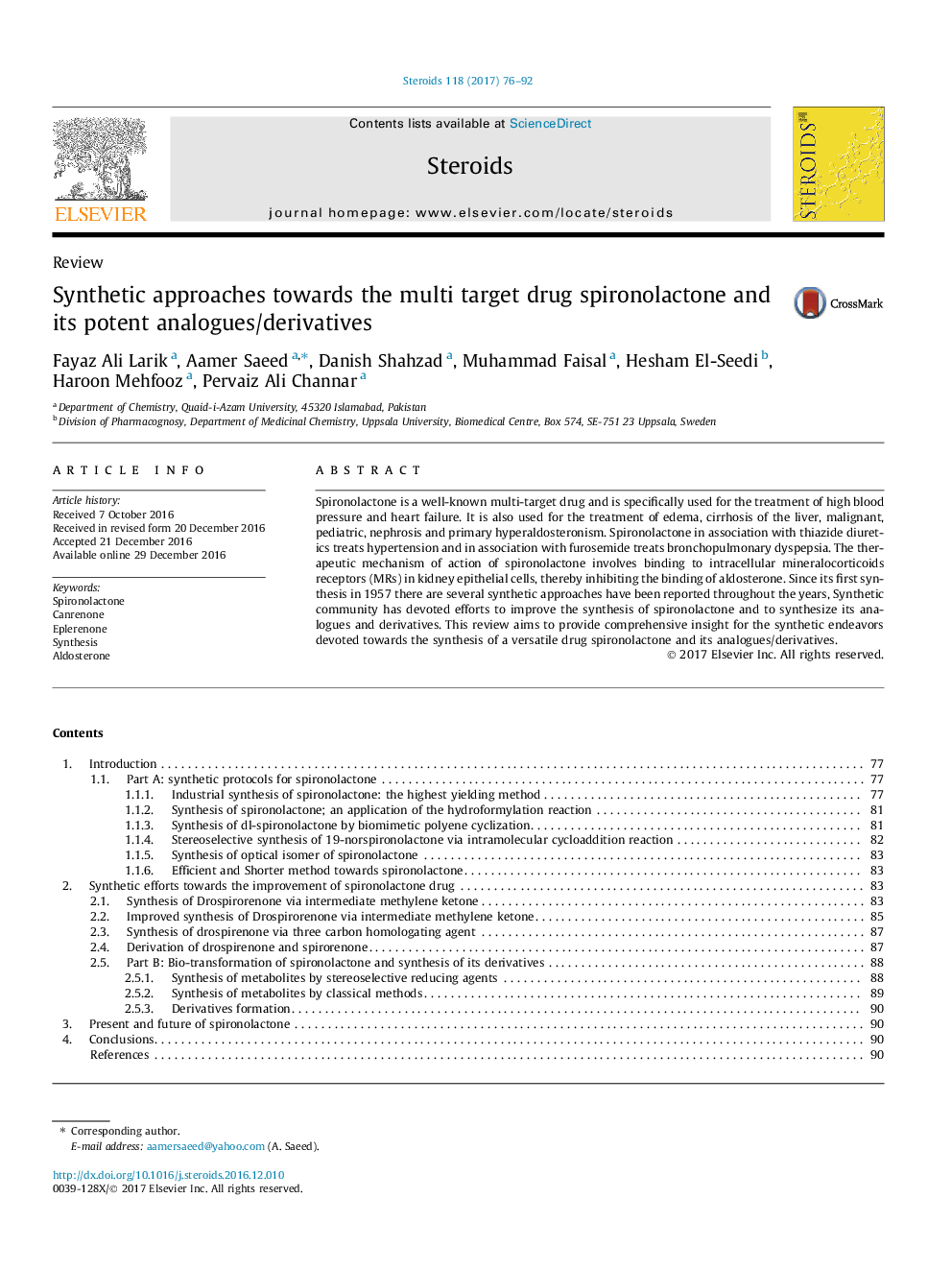| Article ID | Journal | Published Year | Pages | File Type |
|---|---|---|---|---|
| 5516702 | Steroids | 2017 | 17 Pages |
â¢Synthetic approaches to the versatile mutitarget drug spironolactone have been reviewed.â¢Aims to provide a comprehensive insight to the synthetic endeavors devoted to drug and its analogues/derivatives.â¢It will help the synthetic chemist to design and prepare new more effective derivatives.â¢The efficacy and limitations of the drug have also been discussed.
Spironolactone is a well-known multi-target drug and is specifically used for the treatment of high blood pressure and heart failure. It is also used for the treatment of edema, cirrhosis of the liver, malignant, pediatric, nephrosis and primary hyperaldosteronism. Spironolactone in association with thiazide diuretics treats hypertension and in association with furosemide treats bronchopulmonary dyspepsia. The therapeutic mechanism of action of spironolactone involves binding to intracellular mineralocorticoids receptors (MRs) in kidney epithelial cells, thereby inhibiting the binding of aldosterone. Since its first synthesis in 1957 there are several synthetic approaches have been reported throughout the years, Synthetic community has devoted efforts to improve the synthesis of spironolactone and to synthesize its analogues and derivatives. This review aims to provide comprehensive insight for the synthetic endeavors devoted towards the synthesis of a versatile drug spironolactone and its analogues/derivatives.
Graphical abstractDownload high-res image (199KB)Download full-size image
